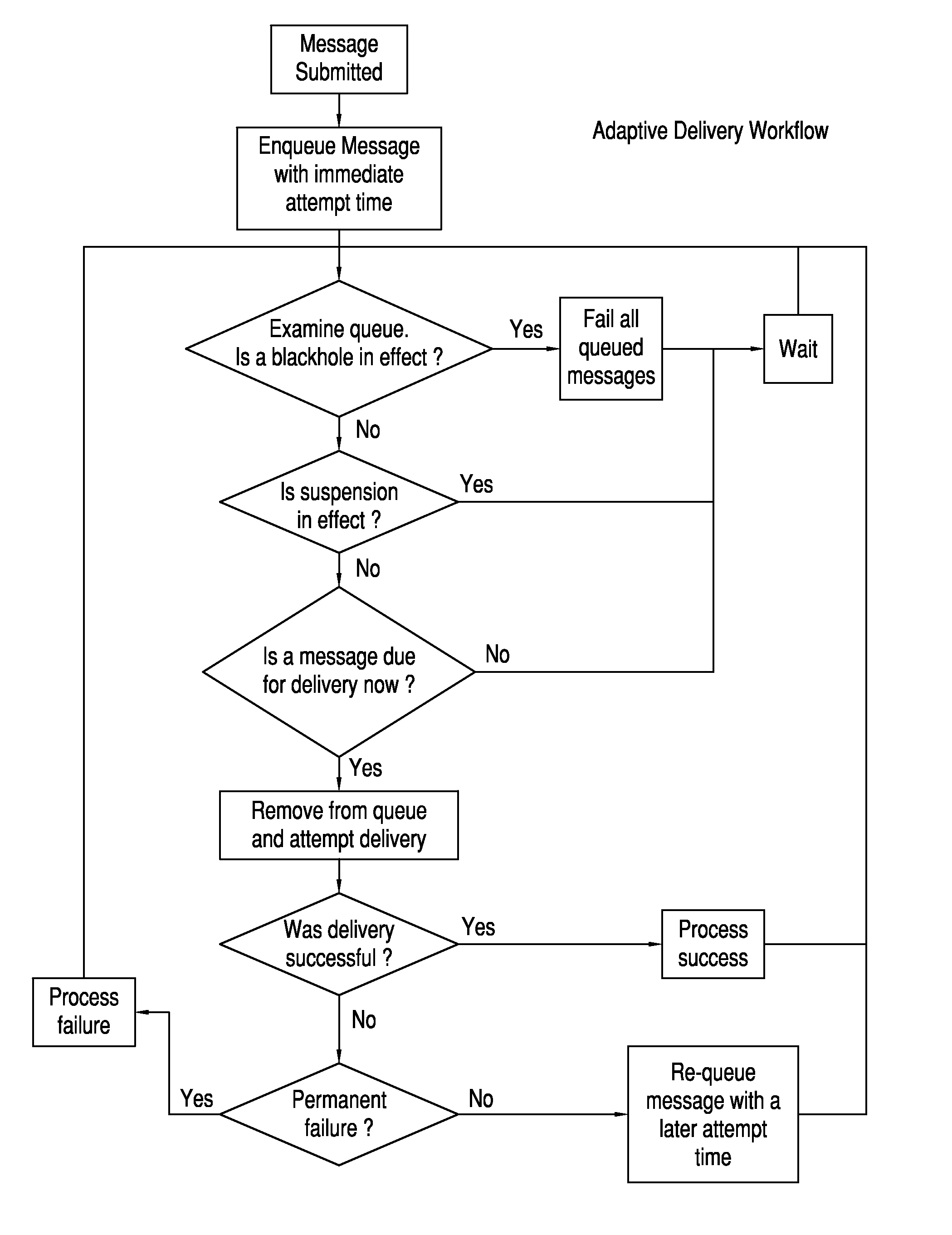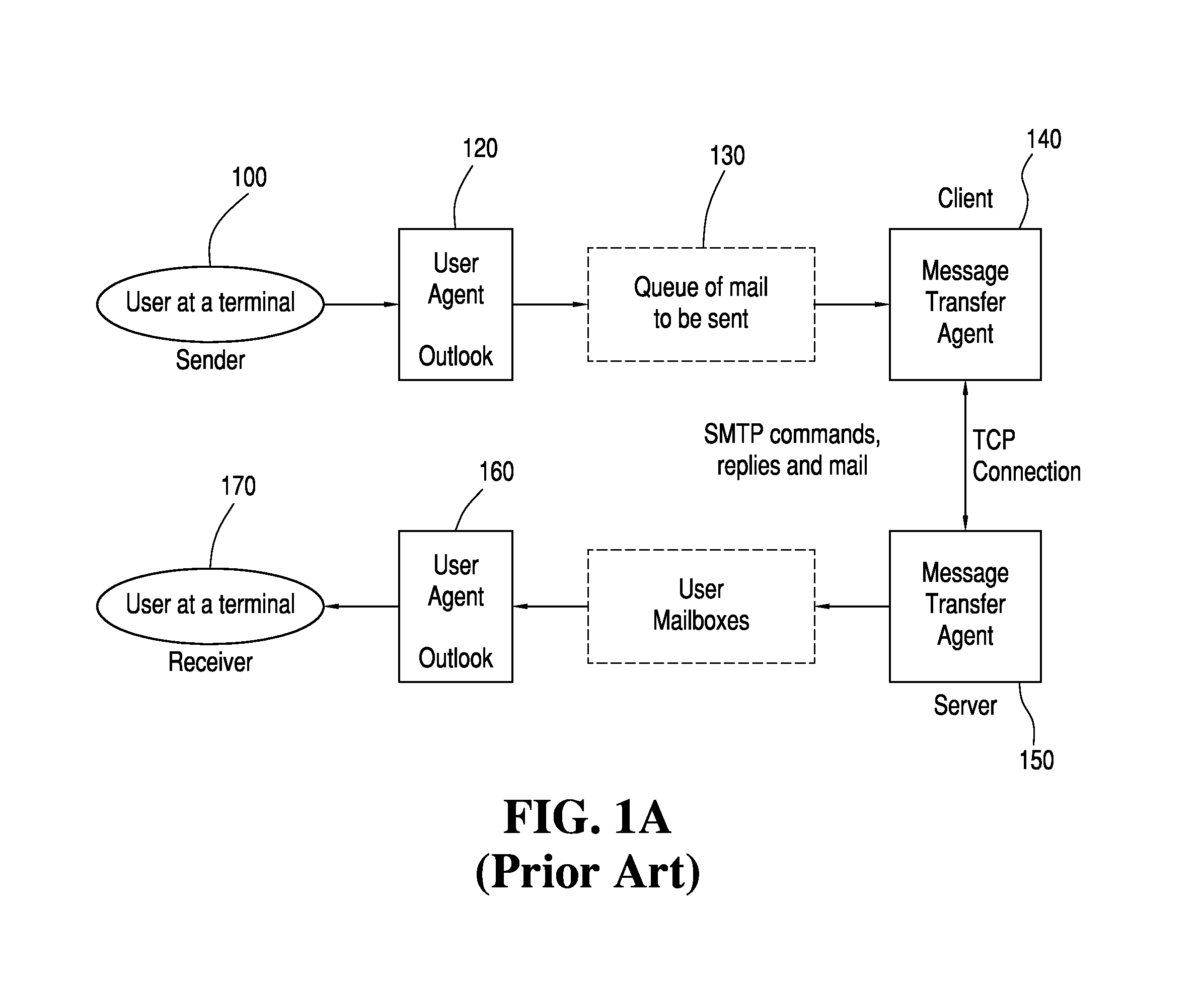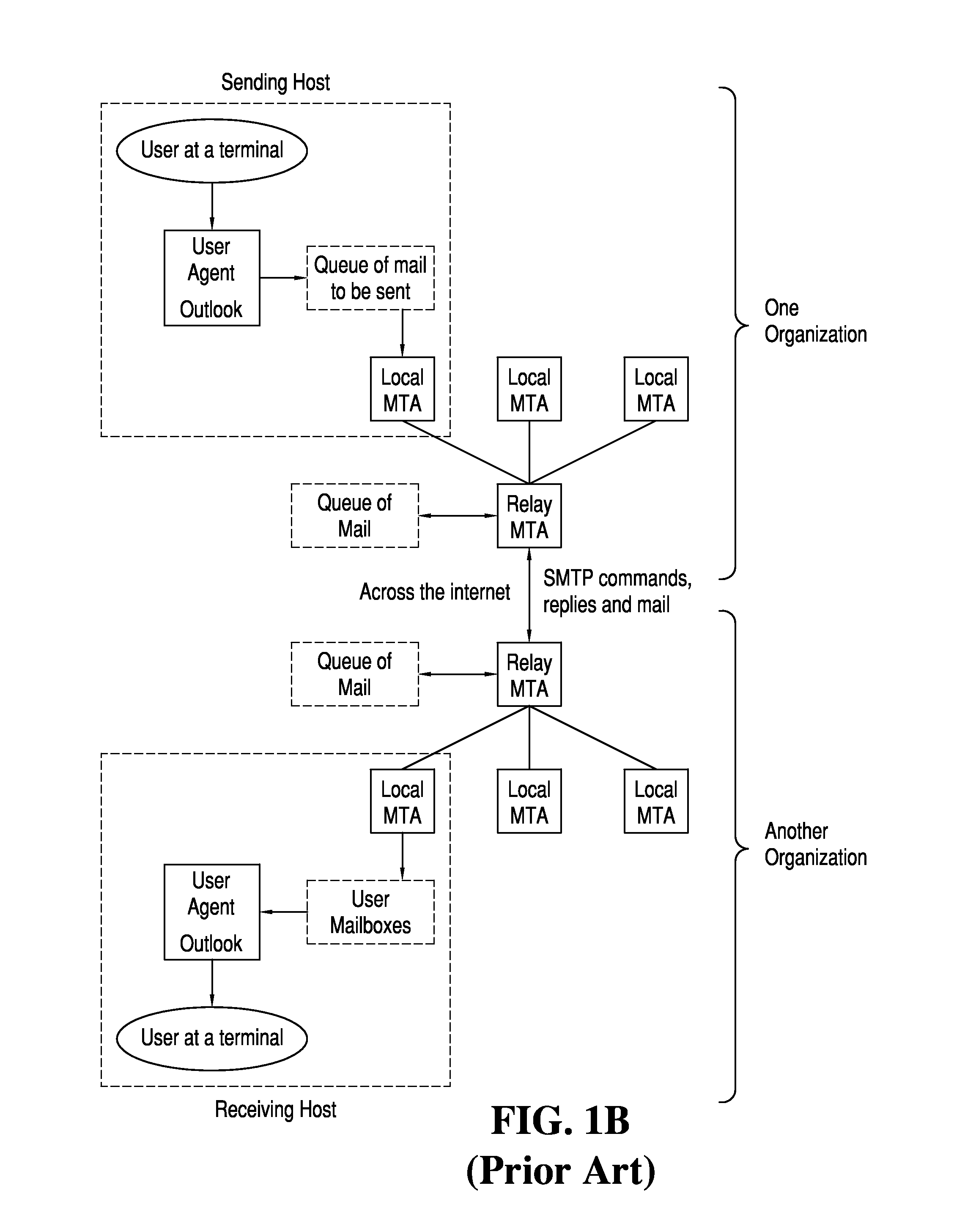Method and system for adaptive delivery of digital messages
a digital message and adaptive technology, applied in the direction of digital transmission, data switching network, electrical equipment, etc., can solve the problems of failure, message sending system may send digital messages to the receiving domain, and existing digital message sending systems are sometimes unsatisfactory, so as to achieve convenient, flexible and effective
- Summary
- Abstract
- Description
- Claims
- Application Information
AI Technical Summary
Benefits of technology
Problems solved by technology
Method used
Image
Examples
Embodiment Construction
[0056]Before explaining at least one embodiment of the present invention in detail, it is to be understood that the invention is not limited in its application to the details of construction and to the arrangements of the components set forth in the following description or illustrated in the application's drawings or figures. The invention is capable of other embodiments and of being practiced and carried out in various ways. Also, it is to be understood that the phraseology and terminology employed herein are for the purpose of description and should not be regarded as limiting.
[0057]For example, throughout the remainder of this description, when the term “per-domain” is used, it indicates some preference or behavior that is scoped to a given recipient system. For instance, when referring to email, “joe@example.com and bob@example.com” are two distinct recipients that are serviced by the same email domain (i.e., example.com). It is typically the case that the receiving system for ...
PUM
 Login to View More
Login to View More Abstract
Description
Claims
Application Information
 Login to View More
Login to View More - R&D
- Intellectual Property
- Life Sciences
- Materials
- Tech Scout
- Unparalleled Data Quality
- Higher Quality Content
- 60% Fewer Hallucinations
Browse by: Latest US Patents, China's latest patents, Technical Efficacy Thesaurus, Application Domain, Technology Topic, Popular Technical Reports.
© 2025 PatSnap. All rights reserved.Legal|Privacy policy|Modern Slavery Act Transparency Statement|Sitemap|About US| Contact US: help@patsnap.com



